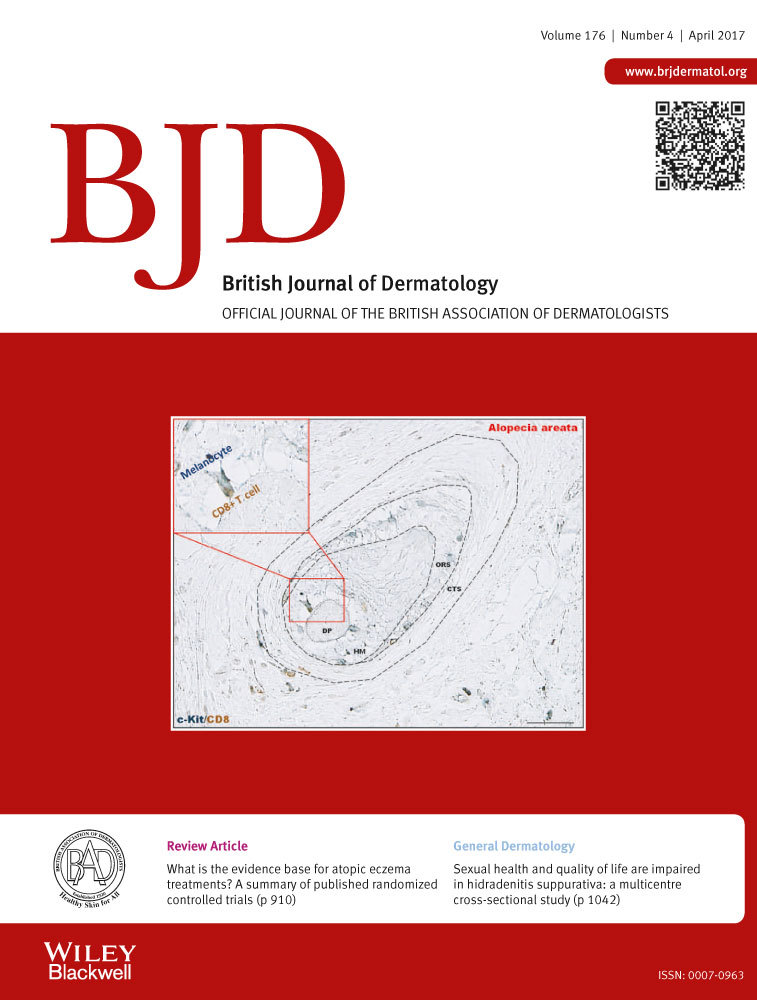Patient-Oriented Eczema Measure (POEM), a core instrument to measure symptoms in clinical trials: a Harmonising Outcome Measures for Eczema (HOME) statement
Funding sources:
Funding for the consensus meeting was received from the Swedish Asthma and Allergy Association, LEO Foundation and the Region of Skåne (county), Sweden.
Conflicts of interest:
H.C.W. was involved with the development and validation of POEM. C.J.A., E.S., P.I.S., K.S.T., J.S. and H.C.W. are members of the executive committee of the HOME initiative. L.A.A.G., J.R.C., C.A.C.P. and L.B.v.K. are members of the HOME initiative. J.A.S. is a member of the executive of OMERACT, an organization that develops outcome measures in rheumatology and receives arms-length funding from 36 companies. The authors state there are no other conflicts of interest for this study.
Summary
Background
The Harmonising Outcome Measures for Eczema (HOME) initiative has defined four core outcome domains for a core outcome set (COS) to be measured in all atopic eczema (AE) trials to ensure cross-trial comparison: clinical signs, symptoms, quality of life and long-term control.
Objectives
The aim of this paper is to report on the consensus process that was used to select the core instrument to consistently assess symptoms in all future AE trials.
Methods
Following the HOME roadmap, two systematic reviews were performed which identified three instruments that had sufficient evidence of validity, reliability and feasibility to be considered for the final COS.
Results
At the fourth international HOME meeting, there was broad consensus among all stakeholders that the Patient-Oriented Eczema Measure (POEM) should be used as the core instrument (87·5% agreed, 9·4% unsure, 3·1% disagreed).
Conclusions
All relevant stakeholders are encouraged to use POEM as the chosen instrument to measure the core domain of symptoms in all future AE clinical trials. Other instruments of interest can be used in addition to POEM.




